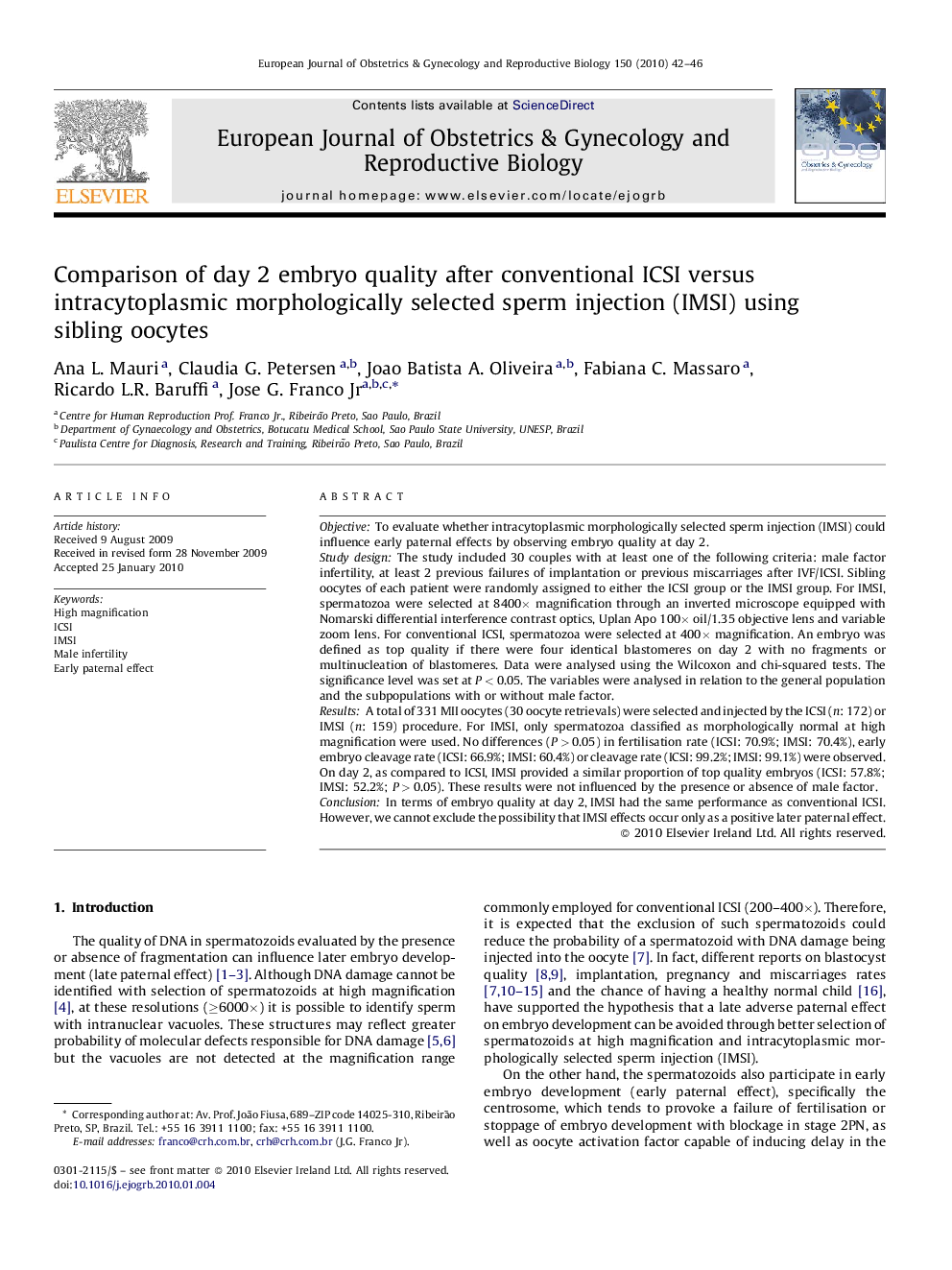| Article ID | Journal | Published Year | Pages | File Type |
|---|---|---|---|---|
| 3921298 | European Journal of Obstetrics & Gynecology and Reproductive Biology | 2010 | 5 Pages |
ObjectiveTo evaluate whether intracytoplasmic morphologically selected sperm injection (IMSI) could influence early paternal effects by observing embryo quality at day 2.Study designThe study included 30 couples with at least one of the following criteria: male factor infertility, at least 2 previous failures of implantation or previous miscarriages after IVF/ICSI. Sibling oocytes of each patient were randomly assigned to either the ICSI group or the IMSI group. For IMSI, spermatozoa were selected at 8400× magnification through an inverted microscope equipped with Nomarski differential interference contrast optics, Uplan Apo 100× oil/1.35 objective lens and variable zoom lens. For conventional ICSI, spermatozoa were selected at 400× magnification. An embryo was defined as top quality if there were four identical blastomeres on day 2 with no fragments or multinucleation of blastomeres. Data were analysed using the Wilcoxon and chi-squared tests. The significance level was set at P < 0.05. The variables were analysed in relation to the general population and the subpopulations with or without male factor.ResultsA total of 331 MII oocytes (30 oocyte retrievals) were selected and injected by the ICSI (n: 172) or IMSI (n: 159) procedure. For IMSI, only spermatozoa classified as morphologically normal at high magnification were used. No differences (P > 0.05) in fertilisation rate (ICSI: 70.9%; IMSI: 70.4%), early embryo cleavage rate (ICSI: 66.9%; IMSI: 60.4%) or cleavage rate (ICSI: 99.2%; IMSI: 99.1%) were observed. On day 2, as compared to ICSI, IMSI provided a similar proportion of top quality embryos (ICSI: 57.8%; IMSI: 52.2%; P > 0.05). These results were not influenced by the presence or absence of male factor.ConclusionIn terms of embryo quality at day 2, IMSI had the same performance as conventional ICSI. However, we cannot exclude the possibility that IMSI effects occur only as a positive later paternal effect.
